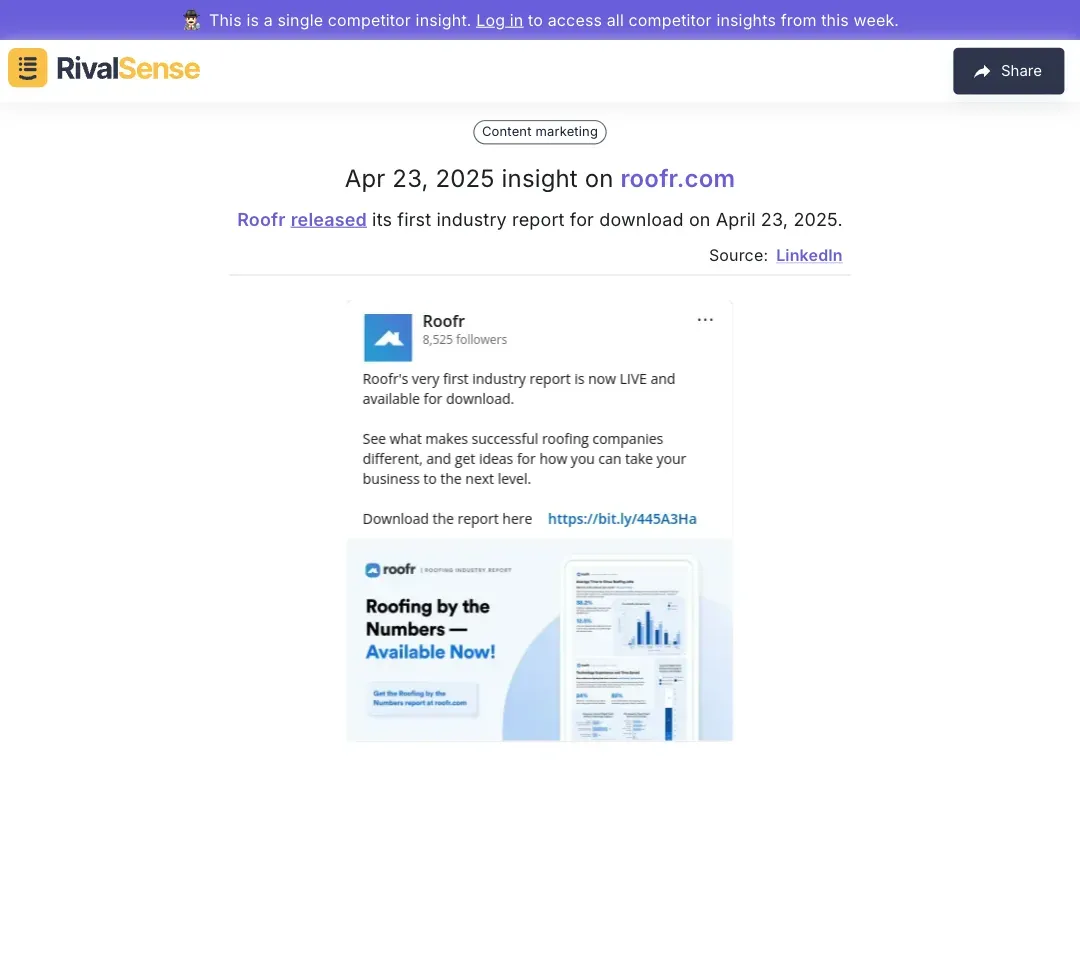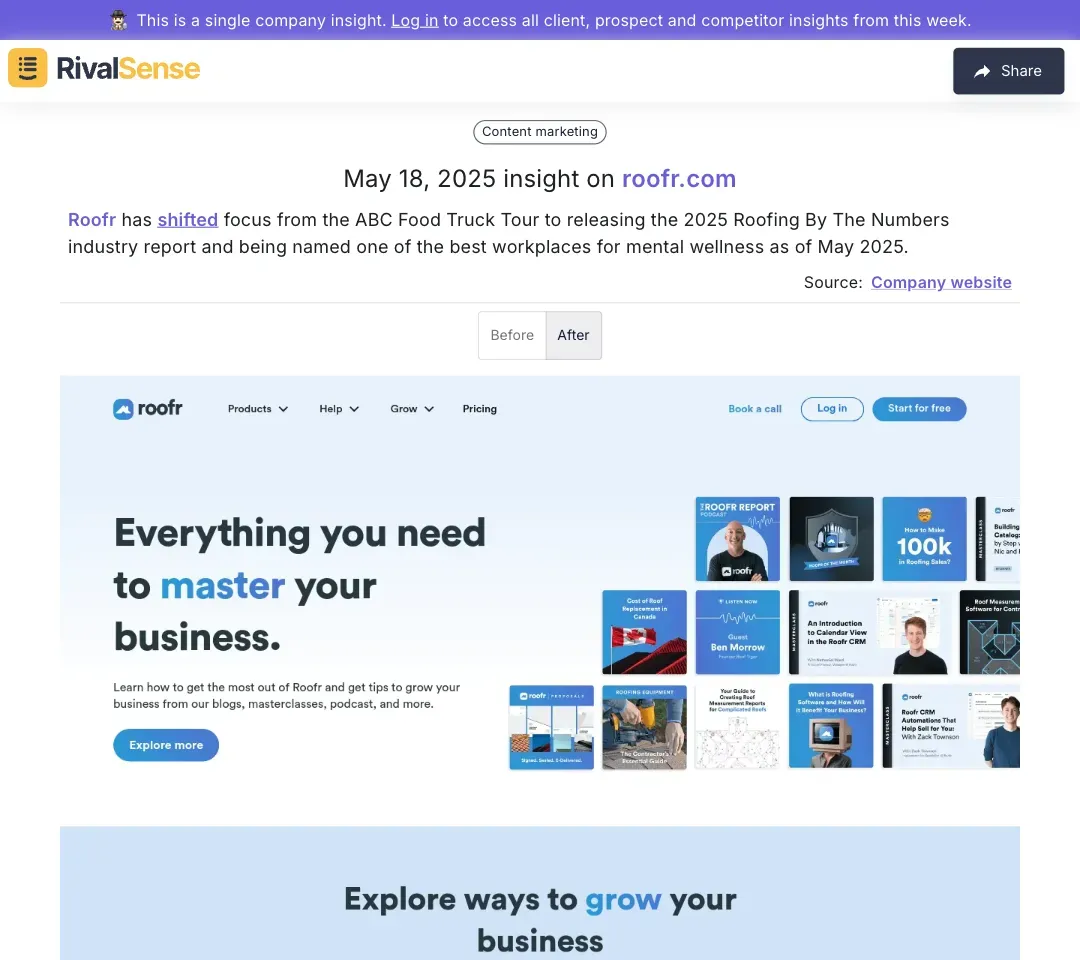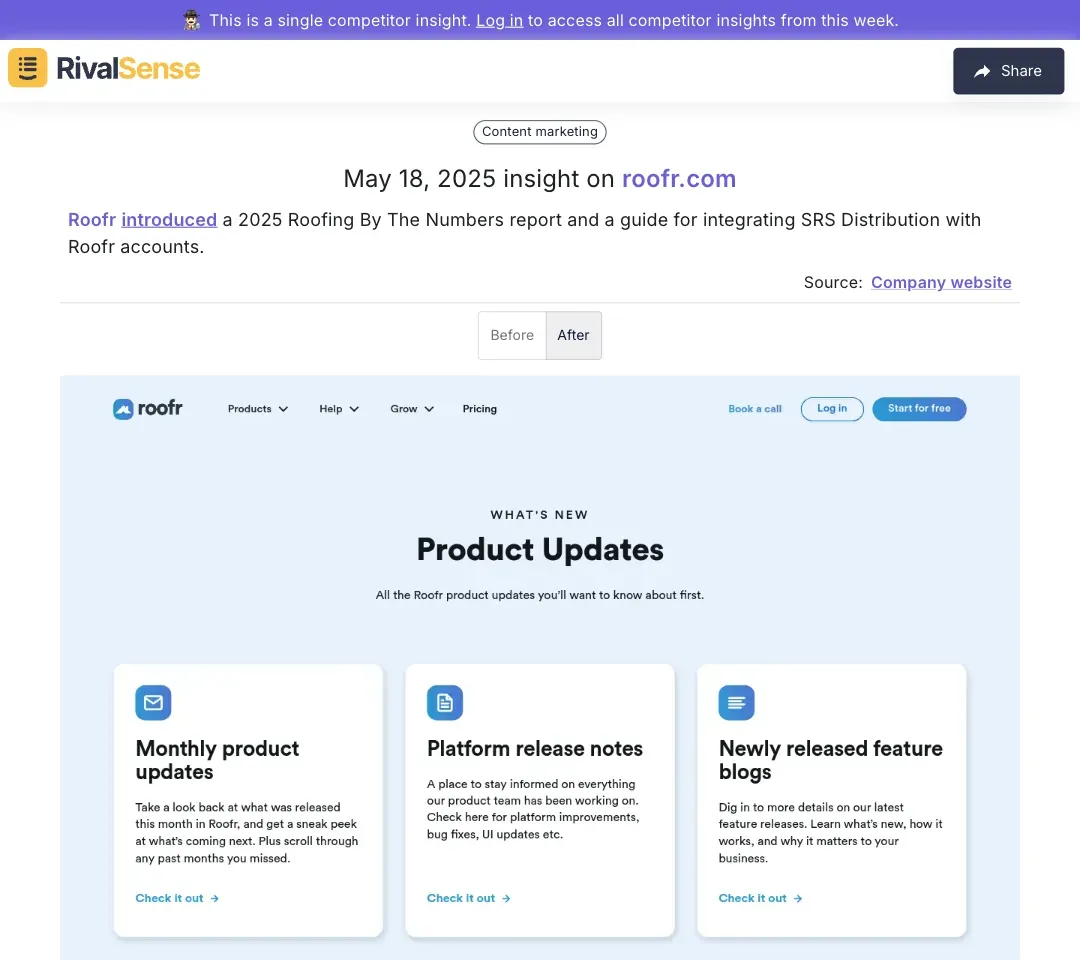5 Common Roofing Software Mistakes to Avoid for Better Customer Segmentation
In the competitive roofing industry, understanding your customer base is not just beneficial—it's essential. Customer segmentation, the process of dividing your customer base into groups of individuals that are similar in specific ways, allows roofing businesses to tailor their marketing, sales, and service strategies to meet unique needs. This targeted approach significantly enhances customer satisfaction, loyalty, and ultimately, your bottom line.
Roofing software plays a pivotal role in refining these segmentation strategies. By leveraging data analytics and automation, these tools help identify patterns and preferences within your customer base, enabling more precise segmentation. However, common mistakes can undermine these efforts, leading to missed opportunities and inefficient resource allocation.
Practical Tip: Start with basic segmentation criteria like geographic location or project size, then gradually incorporate nuanced factors like purchase behavior as your data capabilities grow.
Mistake 1: Overlooking Industry Trends and Data
Ignoring the latest industry trends and data is a critical mistake that leads to outdated customer segmentation. Leveraging industry reports provides valuable insights into emerging preferences and market shifts, helping you create segments that reflect current realities rather than historical assumptions.
Why It Matters:
- Informed Segmentation: Industry reports highlight shifts in customer preferences, enabling tailored offerings.
- Avoiding Obsolescence: Trends like sustainable materials can redefine customer needs overnight.
Practical Steps:
- Subscribe to Industry Reports: Regularly review publications like Roofing Contractor.
- Integrate External Data: Combine internal metrics with market research.
- Update Segments Quarterly: Refresh customer profiles to reflect new trends.
RivalSense Insight Example:

Roofr released its first industry report for download on April 23, 2025. Tracking such competitor insights helps identify emerging trends early, allowing you to adjust segmentation before market shifts impact your strategy.
Checklist:
- [ ] Identify key industry reports
- [ ] Analyze relevant trends quarterly
- [ ] Test new segments via targeted campaigns
Mistake 2: Failing to Integrate Complementary Tools
Overlooking software integrations creates data silos that cripple segmentation accuracy. When roofing software doesn't sync with CRM or accounting platforms, customer information becomes fragmented, leading to inconsistent segmentation and missed opportunities.
Seamless integration ensures unified customer views by eliminating manual data entry errors. This holistic perspective enables precise segmentation based on complete interaction histories and behavioral patterns.
Practical Steps:
- Audit Existing Tools: List daily-use platforms (CRM, invoicing, etc.).
- Prioritize Compatibility: Choose software with API-based integrations.
- Automate Data Flows: Set real-time syncs between systems.
Case Study: A roofing company integrated their software with a CRM, achieving 30% better data accuracy and 20% sharper segmentation within months.
Pro Tips:
- 🔄 Start with one integration (e.g., CRM)
- 🛠️ Conduct quarterly integration audits
- 📞 Leverage vendor support for troubleshooting
Mistake 3: Neglecting Employee Well-being and Its Impact on Service
Employee well-being directly influences customer experience quality—a factor often overlooked in segmentation strategies. Stressed teams deliver inconsistent service, skewing customer feedback data used for segmentation, while motivated employees provide authentic insights into client needs.
Mental wellness initiatives correlate with higher customer satisfaction scores. When employees feel supported, they engage more meaningfully with clients, capturing nuances that refine segmentation criteria like service preferences or responsiveness expectations.
Strategies for Improvement:
- Implement Wellness Programs: Introduce mental health days or flexible schedules.
- Train Managers: Equip leaders to recognize burnout signs.
- Create Feedback Channels: Gather employee insights on customer pain points.
RivalSense Insight Example:

Roofr was named a top workplace for mental wellness in May 2025. Monitoring such competitor recognitions reveals how employee initiatives correlate with service quality—insights that help benchmark your own culture's impact on customer satisfaction.
Action Plan:
- ✅ Conduct monthly well-being check-ins
- 💡 Launch peer-recognition programs
- 📊 Measure customer satisfaction pre/post wellness initiatives
Mistake 4: Delaying the Release of Valuable Resources
Procrastinating on resource launches forfeits thought leadership opportunities and customer engagement. Timely guides or reports capture audience interest when relevance peaks, while delays allow competitors to dominate conversations and influence customer perceptions.
Resources like seasonal trend reports also generate fresh segmentation data. Early releases let you analyze download patterns and engagement metrics, revealing new customer interests before they appear in sales data.
Optimization Tactics:
- Build a Content Calendar: Align releases with industry events/seasons.
- Streamline Approvals: Use collaborative tools for faster sign-offs.
- Repurpose Assets: Turn webinars into downloadable checklists.
RivalSense Insight Example:

Roofr introduced its 2025 Roofing By The Numbers report alongside an SRS Distribution integration guide. Tracking competitor resource timing helps identify content gaps and optimal launch windows—ensuring your materials drive maximum segmentation value.
Release Checklist:
- [ ] Schedule resources 60 days before peak relevance
- [ ] Create promotional drip campaigns
- [ ] Track download demographics for segmentation
Mistake 5: Lacking Clear Segmentation Goals
Vague objectives like "improve targeting" undermine segmentation ROI. Without specific goals tied to business outcomes, segmentation becomes an academic exercise rather than a growth driver, wasting resources on irrelevant customer groupings.
Effective segmentation starts by aligning criteria with measurable targets—e.g., "Increase commercial client retention by 15% in Q3." This focus ensures segments directly support revenue or efficiency priorities.
Goal-Setting Framework:
- Define Primary Objectives: Choose 1-2 targets (e.g., reduce churn, boost AOV).
- Establish KPIs: Track segment-specific conversion rates.
- Review Bi-Quarterly: Pivot criteria if goals aren't met.
SMART Goal Example:
"Target homeowners in hail-prone ZIP codes with roof-inspection campaigns to increase emergency service conversions by 18% before storm season."
Validation Tactics:
- 🔍 A/B test segment performance
- 📉 Compare cohort retention rates
- 🎯 Tie segment results to sales team quotas
Conclusion: Building a Future-Proof Segmentation Strategy
Avoiding these five mistakes—overlooking trends, poor integrations, neglecting staff wellness, delayed resources, and unclear goals—transforms segmentation from a tactical exercise into a strategic advantage. Consistent refinement based on industry shifts and customer feedback ensures your segments remain dynamic and revenue-focused.
Key Maintenance Habits:
- 🗓️ Quarterly segmentation audits
- 📢 Customer feedback integration loops
- 🔄 Technology stack optimization
🚀 Try RivalSense Free
Outpace competitors by tracking their product launches, pricing changes, and strategic moves. RivalSense delivers actionable competitor insights via weekly reports—helping you avoid these mistakes while refining segmentation.
👉 Get Your First Competitor Report Today
📚 Read more
👉 Data-Driven Insights on Competitor Partnerships & Client Strategies
👉 How Linear's AI Scheduling Spurred Competitor Innovation
👉 Unlock Competitor Secrets: A Founder's Guide to LinkedIn Benchmarking
👉 Unlocking Competitive Edge: Analyzing Competitor Partnerships & Client Wins
👉 4 AI-Driven Strategies for Competitive Intelligence in Healthcare
